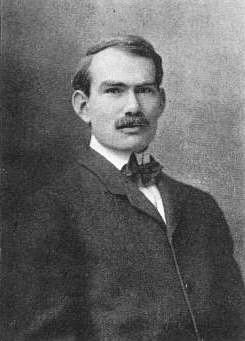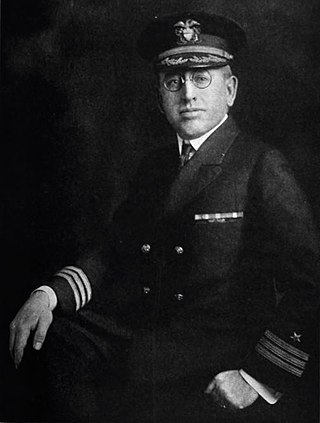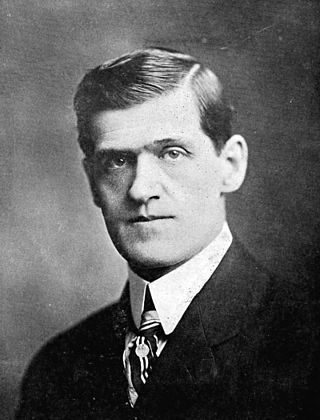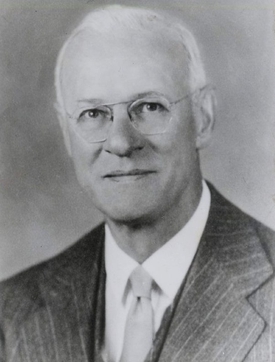The early history of radio is the history of technology that produces and uses radio instruments that use radio waves. Within the timeline of radio, many people contributed theory and inventions in what became radio. Radio development began as "wireless telegraphy". Later radio history increasingly involves matters of broadcasting.
The RCA Corporation was a major American electronics company, which was founded in 1919 as the Radio Corporation of America. It was initially a patent trust owned by General Electric (GE), Westinghouse, AT&T Corporation and United Fruit Company. In 1932, RCA became an independent company after the partners were required to divest their ownership as part of the settlement of a government antitrust suit.

Wireless telegraphy or radiotelegraphy is transmission of text messages by radio waves, analogous to electrical telegraphy using cables. Before about 1910, the term wireless telegraphy was also used for other experimental technologies for transmitting telegraph signals without wires. In radiotelegraphy, information is transmitted by pulses of radio waves of two different lengths called "dots" and "dashes", which spell out text messages, usually in Morse code. In a manual system, the sending operator taps on a switch called a telegraph key which turns the transmitter on and off, producing the pulses of radio waves. At the receiver the pulses are audible in the receiver's speaker as beeps, which are translated back to text by an operator who knows Morse code.

AM broadcasting is radio broadcasting using amplitude modulation (AM) transmissions. It was the first method developed for making audio radio transmissions, and is still used worldwide, primarily for medium wave transmissions, but also on the longwave and shortwave radio bands.

Lee de Forest was an American inventor and a fundamentally important early pioneer in electronics. He invented the first practical electronic amplifier, the three-element "Audion" triode vacuum tube in 1906. This helped start the Electronic Age, and enabled the development of the electronic oscillator. These made radio broadcasting and long distance telephone lines possible, and led to the development of talking motion pictures, among countless other applications.

Valdemar Poulsen was a Danish engineer who developed a magnetic wire recorder called the telegraphone in 1898. He also made significant contributions to early radio technology, including the first continuous wave radio transmitter, the Poulsen arc, which was used for a majority of the earliest audio radio transmissions, before being supplanted by the development of vacuum-tube transmitters.

Charles David "Doc" Herrold was an American inventor and pioneer radio broadcaster, who began experimenting with audio radio transmissions in 1909. Beginning in 1912 he apparently became the first person to make entertainment broadcasts on a regular schedule, from his station in San Jose, California.

Standard Telephones and Cables Ltd was a British manufacturer of telephone, telegraph, radio, telecommunications, and related equipment. During its history, STC invented and developed several groundbreaking new technologies including pulse-code modulation (PCM) and optical fibres.

The arc converter, sometimes called the arc transmitter, or Poulsen arc after Danish engineer Valdemar Poulsen who invented it in 1903, was a variety of spark transmitter used in early wireless telegraphy. The arc converter used an electric arc to convert direct current electricity into radio frequency alternating current. It was used as a radio transmitter from 1903 until the 1920s when it was replaced by vacuum tube transmitters. One of the first transmitters that could generate continuous sinusoidal waves, it was one of the first technologies used to transmit sound by radio. It is on the list of IEEE Milestones as a historic achievement in electrical engineering.
The Hillsboro wireless tower was a wireless telegraph station south of Hillsboro, Oregon, United States. Located adjacent to what is now Meriwether National Golf Club, at the time it was the second tallest steel tower in the world after France’s Eiffel Tower. The tower was constructed in 1921 and was torn down in 1952.

Stanford Caldwell Hooper was a Rear Admiral of the United States Navy, and a noted radio pioneer who has been called "the Father of Naval Radio". Hooper conducted pioneering radio tests, established land stations for communication with the fleet, and served as technical advisor and head of many boards and committees dealing with communications.
Haraden Pratt was a noted American electrical engineer and radio pioneer.
Dr. Leonard F. Fuller was a noted American radio pioneer. In 1919, Fuller earned a PhD degree at the Stanford Department of Electrical Engineering. In World War I, he was part of the antisubmarine group of the National Research Council, and charged with the design and installation of the "high-power transoceanic radio telegraph stations" built by the United States Army and Navy. He held 24 patients for inventions before his death. He spent time as chair of the electrical engineering department at University of California, Berkeley, and then was acting professor of electrical engineering at Stanford University from 1946 until he retired in 1954.
Santa Clara County, California, is one of California's original counties, with prior habitation dating from prehistory to the Alta California period.

Archie Frederick Collins, who generally went by A. Frederick Collins, was a prominent early American experimenter in wireless telephony and prolific author of books and articles covering a wide range of scientific and technical subjects. His reputation was tarnished in 1913 when he was convicted of mail fraud related to stock promotion. However, after serving a year in prison, he returned to writing, including, beginning in 1922, The Radio Amateur's Handbook, which continued to be updated and published until the mid-1980s.
C. Lorenz AG (1880–1958) was a German electrical and electronics firm primarily located in Berlin. It innovated, developed, and marketed products for electric lighting, telegraphy, telephony, radar, and radio. It was acquired by ITT in 1930 and became part of the newly founded company Standard Elektrik Lorenz (SEL) Stuttgart in 1958, when it merged with Standard Elektrizitätsgesellschaft and several other smaller companies owned by ITT. In 1987, SEL merged with the French companies Compagnie Générale d'Electricité and Alcatel to form the new Alcatel SEL.
Radio station 2XG, also known as the "Highbridge Station", was an experimental radio station located in New York City and licensed to the De Forest Radio Telephone and Telegraph Company from 1915 to 1917 and 1920 to 1924. In 1916, it became the first radio station employing a vacuum-tube transmitter to make news and entertainment broadcasts on a regular schedule, and, on November 7, 1916, became the first to broadcast U.S. presidential election returns by spoken word instead of by Morse code.

Cyril Frank Elwell was an Australian-born American inventor and pioneer in development of radio.

NAA was a major radio facility located at 701 Courthouse Road in Arlington, Virginia. It was operated by the U.S. Navy from 1913 until 1941. The station was originally constructed as the Navy's first high-powered transmitter for communicating with its bases across the U.S. and the Caribbean. During its years of operation NAA was best known for broadcasting daily time signals, however, it also provided a variety of additional services, using multiple transmitters operating on frequencies ranging from longwave to shortwave. The station also conducted extensive experimental work, including, in 1915, the Navy's first transatlantic transmission of speech.
Francis Joseph McCarty was a San Francisco experimenter, who conducted early radiotelephone research and development. He died at the age of 17, but despite his young age and early death, in 2011 he was elected into the Bay Area Radio Hall of Fame, recognized as being one of the "pioneers of broadcasting in the Bay Area".










